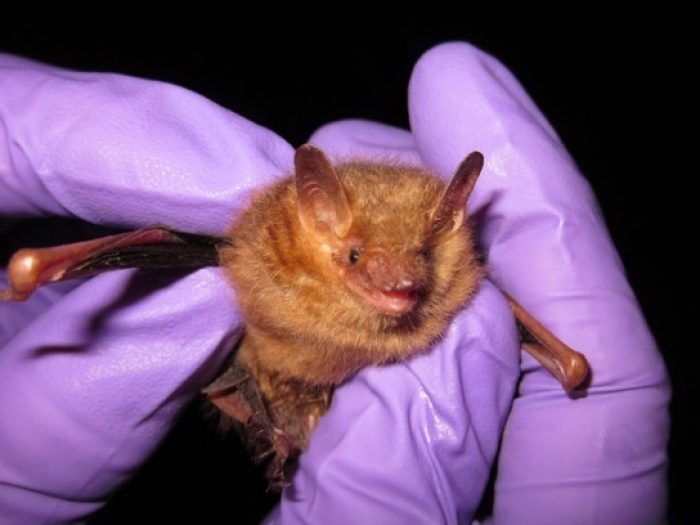The U.S. Fish and Wildlife Service is currently recommending that all bat handling activities, including summer mist net surveys, are postponed until there is a better understanding of the risk to North American bat species posed by the COVID-19 Virus (SARS-CoV-2).

Assessing the Risk to Bats and People
Many mammals, including humans and wildlife, are susceptible to infection by a diversity of coronaviruses. Currently, it is unknown whether the novel coronavirus, COVID-19, has the potential to infect or cause illness in North American wildlife, including bats.
Possible infection of COVID-19 could cause irreversible harm to already fragile bat populations, or conversely, bats could potentially infect humans during handling. Recognizing this issue, a team of wildlife experts is working alongside the U.S. Fish and Wildlife Service (USFWS) and U.S. Geological Survey (USGS) to rapidly assess the risk COVID-19 may pose to North American bats and create evidence-based guidelines for management. For the moment, management includes the prohibition of all bat handling, including for summer presence/absence surveys and other coordination based efforts.
How EnviroScience Can Help
EnviroScience is closely monitoring all USFWS recommendations. We encourage early coordination on any project that may involve potential impact to bats or their habitat, in order to stay in front of issues. The USFWS recognizes that information from biological surveys is essential for future or ongoing effects determinations to comply with the Endangered Species Act (ESA), such as Section 7 consultations or Section 10 actions (HCPs, SHAs, CCAAs, etc.). Considering the current conditions related to COVID-19, USFWS will be as flexible as possible, working with project proponents and applicants to use alternative strategies that do not involve physical contact with bats to inform ESA determinations. EnviroScience is here to help and will work with the local USFWS Field Office to discuss these case-by-case situations and develop appropriate strategies as needed. Acoustic monitoring, emergence surveys, habitat surveys, and habitat creation/mitigation may be viable alternatives, and EnviroScience can help keep your project moving.
EnviroScience will continue to provide updates as released by USFWS and other regulatory agencies. In the meantime, do not hesitate to reach out to our biologists with any questions or concerns. Our technical point of contact is Jamie Willaman, .
Learn More
For more information, the USGS-National Wildlife Health Center has just released a Wildlife Health Bulletin (2020-03) with details on coronaviruses in wildlife, including assessment guidance and guidance for selecting protective equipment.
The Center for Disease Control maintains the latest information on COVID-19 associated risks for animals, with details found here.


